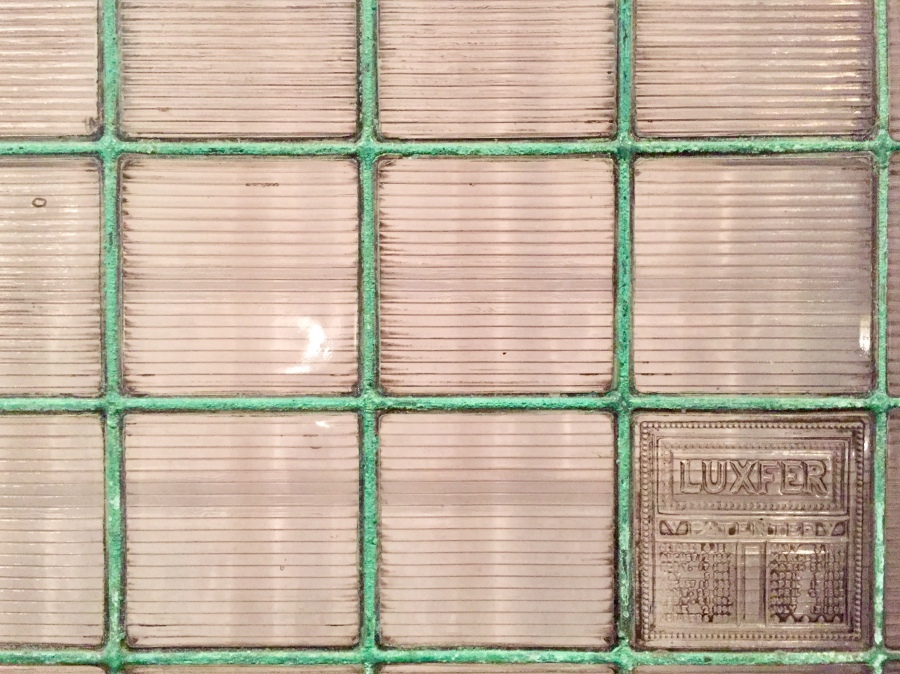
When you hear glass, you probably first think of plain glass windows. Glass, however, has had a long history of varied uses in architecture. Among them: glass prisms and glass blocks. I had seen glass blocks from the mid-twentieth century (my 1960s era high school featured them in all the stairwells) but it wasn’t until I moved to Chicago that I started more unique uses and types of glass. Intrigued, I went searching for more information.
Here, five fun facts about glass prisms and glass block I uncovered in my search:
- Faceted glass, with the intent to refract and increase light, was used as early as 1840 on the decks of sailing vessels to light the space below. The earliest known example is from the Charles W. Morgan, a wooden whaleship now located at Mystic Seaport in Connecticut.
- In the late 1800s, glass prisms were adapted for floors and sidewalks. Sidewalk glass, often turned purple due to sun exposure, can be seen in cities across the U.S. including Seattle.
- Glass blocks–in this case, “glass bricks” designed by Gustave Falconnier–were first seen at Chicago’s 1893 Columbian Exposition. Falconnier’s blocks had a fatal flaw: as they were blown glass, they were constructed with a hole and prone to fogging up on the inside. But, an idea was born!
- Similar to deck prisms, companies appeared in the late 1800s with textured glass meant to increase the light that came through windows. Among these, the Luxfer company in Chicago, which for a time had offices in the Rookery.
- Ultimately, while glass blocks saw an increase in popularity in the mid-1900s, textured glass didn’t last. Why? Likely, a combination of factors: they were hard to clean, electric lights made them less necessary, they were not durable, and air conditioning led to dropped ceilings and removed window space.
Have you spotted interesting or different glass types in architecture? I’d love to hear about it!


Sources and Further Reading:
Learn more about the Charles W. Morgan and Mystic Seaport.
In Seattle? Head to Pioneer Square to check out some of the best prism glass sidewalks.
Forgotten Chicago has a lengthy and very interesting piece on Chicago’s Glass Block.
Want to know more about the 1893 Columbian Exposition? Check out this Chicago Architecture Foundation article for an overview and don’t miss this interactive map from the Chicago Tribune of the buildings and where they stood.
Want to know more about the Rookery? I previously wrote a behind the scenes post as well as six fun facts about the Rookery.



What beautiful spaces. What lovely photos of the Rookery. Louise
LikeLike
Thank you! Both of these buildings are just stunning inside, particularly the Rookery.
LikeLike
I didn’t know that! I explored the Charles W. Morgan many times in my New England childhood (even sleeping aboard as a sea scout), and I know about deck prisms … but I had no idea that the Morgan was the first ship to use them. Thanks!
LikeLike
I wish there was more information about how long glass prisms were used on ships but it turns out glass is very hard to date. Who knew!
LikeLike
[…] Just for looks! The highlight in the Brewster Apartments is the interior hallways, which feature glass block floors. These glass blocks and open sides allow light to filter down all eight floors to the ground […]
LikeLike